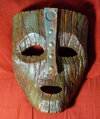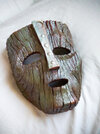joingaramo17
New Member
Hi there, I want to repaint my Loki Mask replica, give it more color variations, details, etc. But I don't know how to start the process on an already painted mask. Should I just paint over with no worries, should I remove the previous paint?
I read that you must first aply an base coat first of dark acrilyc paint, then aply varnish, and then start painting smaller details. Is this correct? I don't know if this would have an impact over the old paint.
I'd like to read some suggestions or if you have experience from repainting a prop, I'd love to read some tips!
Regards!
I read that you must first aply an base coat first of dark acrilyc paint, then aply varnish, and then start painting smaller details. Is this correct? I don't know if this would have an impact over the old paint.
I'd like to read some suggestions or if you have experience from repainting a prop, I'd love to read some tips!
Regards!


